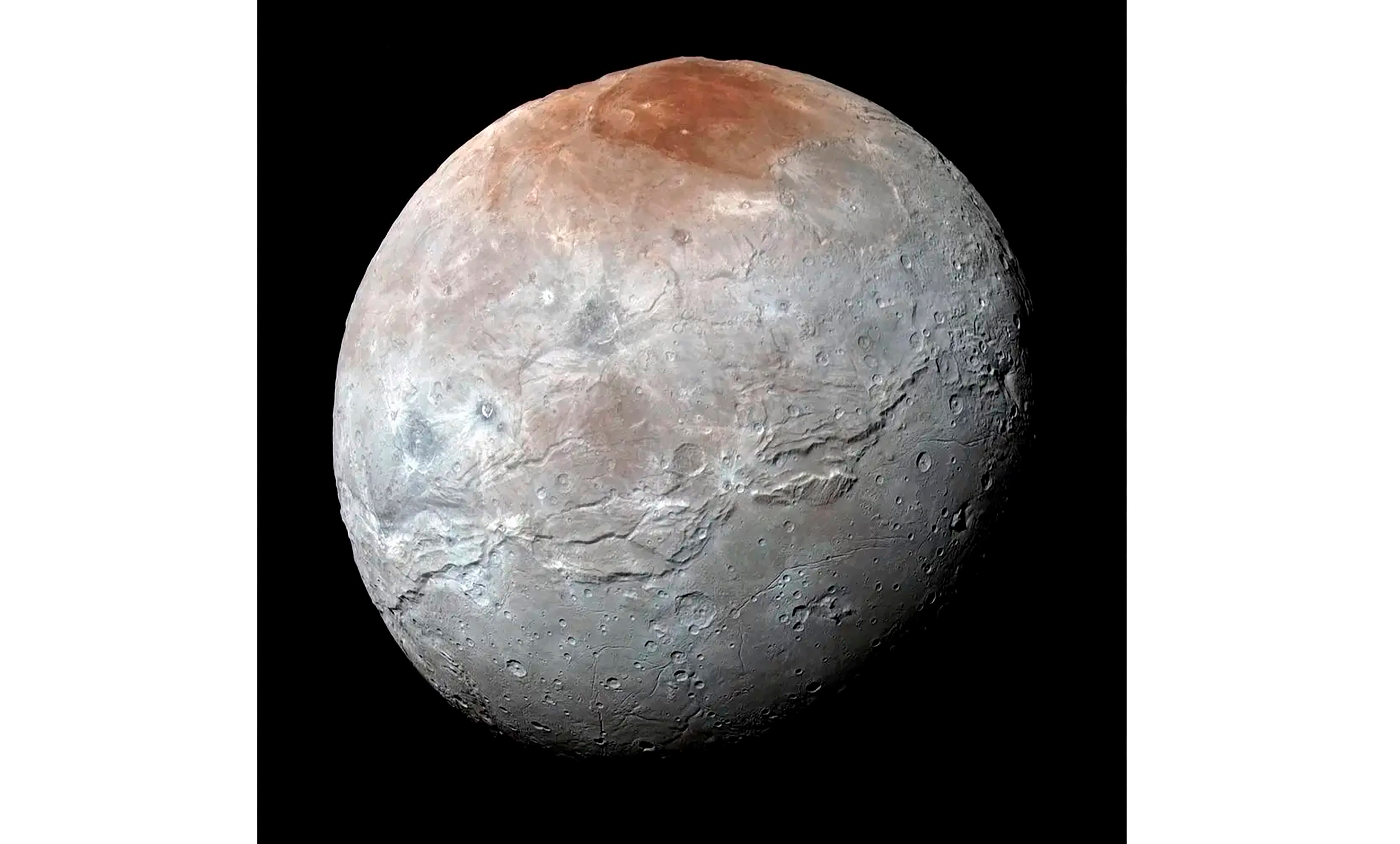NASA's Webb telescope detects traces of carbon dioxide on the surface of Pluto's largest moon
NASA’s Webb Space Telescope has identified new clues about the surface of Pluto’s largest moon

Your support helps us to tell the story
Our mission is to deliver unbiased, fact-based reporting that holds power to account and exposes the truth.
Whether $5 or $50, every contribution counts.
Support us to deliver journalism without an agenda.

Louise Thomas
Editor
NASA's Webb Space Telescope has identified new clues about the surface of Pluto's largest moon.
It detected for the first time traces of carbon dioxide and hydrogen peroxide on the surface of Charon, which is about half Pluto's size.
Previous research, including a flyby from NASA's New Horizons spacecraft in 2015, revealed that the moon's surface was coated by water ice. But scientists couldn't sense chemicals lurking at certain infrared wavelengths until the Webb telescope came around to fill in the gaps.
“There's a lot of fingerprints of chemicals that we otherwise wouldn't get to see,” said Carly Howett, a New Horizons scientist who was not involved with the new study.
The research published Tuesday in the journal Nature Communications.
Pluto, a dwarf planet, and its moons are in the far fringes of our solar system in a zone known as the Kuiper Belt. Besides water ice, ammonia and organic materials were previously detected on Charon. Both Pluto and Charon are over 3 billion miles (4.83 billion kilometers) from the sun and are likely too chilly to support life.
Scientists think the hydrogen peroxide may have sprung from radiation pinging off water molecules on Charon's surface. The carbon dioxide might spew to the surface after impacts, said study co-author Silvia Protopapa from the Southwest Research Institute.
The latest detection is key to studying how Charon came to be and may help scientists tease out the makeup of other faraway moons and planets.
___
The Associated Press Health and Science Department receives support from the Howard Hughes Medical Institute’s Science and Educational Media Group. The AP is solely responsible for all content.
Subscribe to Independent Premium to bookmark this article
Want to bookmark your favourite articles and stories to read or reference later? Start your Independent Premium subscription today.